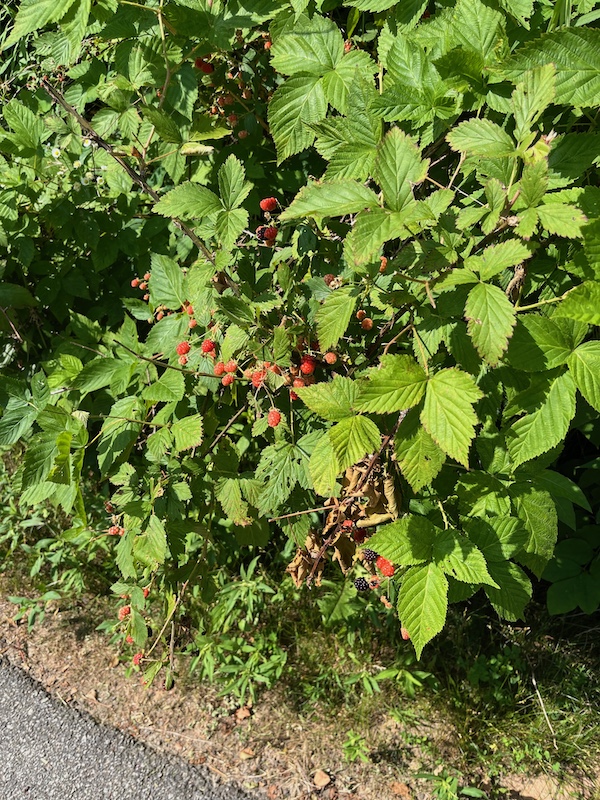Asheville: Some Reflections

Photo: berries growing by the French Broad river. June 2024.
There was a Dollar General semi-truck in the river.
I had flown to Asheville to visit family for Thanksgiving in late November. I was riding with my mother, winding through back roads to avoid washed-out sections, to meet my sister and niece for a movie. Our route took us along a portion of the Swannanoa River. So many things had been left behind by the flooding from Helene two months ago: a delivery van, a twenty-foot boat, construction debris, plastic bags, so much detritus.
We were about to make a turn when I saw the truck, and pointed it out. A semi-truck, including the trailer, dangled off the road and was partially submerged in the river. Its yellow livery stood out in the barren grey brush of late autumn.
Fall foliage was sparse as well, much of it blown or washed away in the storms. The storm had robbed Asheville of a vibrant autumn, just one more indignity.
Describing a void is difficult. If something were replaced, you’d just describe the replacement. But what if there’s no replacement?
The damage from Helene was uneven: some areas were relatively intact, apart from fallen trees and the massive infrastructure damage. But drive a mile, typically into a valley, and you’d find a strip of land that had been washed away, as if the ground were the skin of an orange being peeled.
That’s how I must describe the River Arts District. It was once a collection of industrial buildings, converted to art galleries, coffee houses, breweries, and other cultural spaces, built along the French Broad river. In its place is … mud. Many of the buildings were washed away, scraped off the land by the flood, leaving the barren ground behind. The places that survived were away from the river, up the sides of the valley.
Less than two years ago, I had coffee with my family at a spot (whose name I’ve forgotten, and can’t find in my photos) on a bitterly cold December afternoon. That coffee shop, and the entire building it was in, is gone.
And yet, so much of Asheville remains.
My alma mater, Warren Wilson College, survived the storm, and has reopened its campus. Downtown survived, and with the restoration of potable water to the city, restaurants and shops can reopen fully.
Much of the time with my family that week was spent discussing what had been lost, what was still around, what they expected to happen next year. Did the Wal-Mart that got flooded reopen, or is it still closed? Will the tourists come back in the spring? What about the people who were displaced, many of whom now live in tents at the start of winter?
A life filled with gaps, with uncertainty.
It is my deepest hope that Asheville springs back. It is such a gem, a self-professed weird city in the middle of beautiful western North Carolina. The people who live there have the spirit to heal and to rebuild, and so its soul is still there. It desperately needs stitching up.